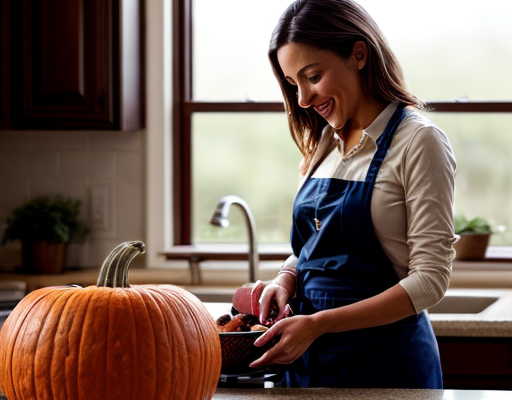
How to Teach Your Kids Basic Cooking Through Seasonal Recipes
“`html
Teach Your Kids Basic Cooking Through Seasonal Recipes
Introduction to Cooking with Kids
Introducing children to cooking is not only a fun activity but also an essential life skill. Teaching kids to prepare simple dishes can foster independence, improve fine motor skills, and deepen their understanding of nutrition. By using seasonal recipes, parents can take advantage of the freshest ingredients and teach children about the natural cycles of food production.
The Benefits of Seasonal Cooking
Seasonal cooking provides a variety of benefits. It’s an excellent way to enjoy the freshest produce, packed with optimal flavor and nutrients. Moreover, it supports local farming communities and is typically more sustainable for the environment. Children who engage in seasonal cooking often develop a stronger connection to the food they eat, making healthier food choices in the future.
Getting Started: Safety First
Before introducing your child to the kitchen, it’s crucial to establish ground rules for safety. This includes proper hand washing, understanding how to use kitchen tools safely, and what tasks are age-appropriate. For younger children, start with simple tasks like washing produce, while older kids can gradually learn to handle more complex tasks under supervision.
Spring into Cooking: Simple Spring Recipes
Spring Salads and Assembly
Springtime is perfect for introducing salads with fresh greens and herbs. Show your children how to clean and tear lettuce, mix a simple vinaigrette, and toss a salad together. As they learn, they’ll develop essential skills like measuring, pouring, and mixing.
Light Spring Soups
Teach your children about seasonality with spring vegetable soups. Starting with a base of sautéed onions and garlic, kids can learn to chop vegetables with safety knives and observe how flavors develop with cooking. Engage them in the process by having them smell and taste herbs and spices as you go along.
Summer Cooking Fun: Fresh and Vibrant
Summer Fruit Snacks
Summer offers an abundance of fruits perfect for kid-friendly snacks. Have your children help you wash, peel, and slice fruits for a fresh fruit salad or blend them into a smoothie. Lessons in cutting and blending can be safely taught with appropriate tools and adult supervision.
No-Cook Summer Meals
Utilize the summer heat to introduce no-cook recipes such as cold sandwiches or wraps. Let your kids spread condiments, layer vegetables, and roll wraps. This is a great way to encourage creativity and independence in the kitchen.
Autumn Harvest: Cooking with the Bounty of Fall
Baking with Fall Fruits
Autumn’s apples and pears are perfect for teaching kids basic baking. Measuring ingredients, mixing batter, and practicing patience while things bake are all important skills they can learn through making muffins or a simple fruit crumble.
Hearty Fall Stews and Chilis
When the weather cools, involve your child in making hearty stews or chilis. Children can help measure ingredients, stir the pot, and learn the principle of layering flavors over time. This also presents an opportunity to teach kids about using seasonal vegetables like squash and pumpkin.
Winter Warmers: Comfort Food for Cold Days
Holiday Treats
The winter season is filled with holidays that have their own special dishes. Engage your child in making seasonal treats, such as gingerbread cookies or latkes. Decorating cookies can enhance their creativity and dexterity.
Simple Stove-top Dishes
Teaching kids to use the stove should be done with utmost care and patience. Start with simple dishes like scrambled eggs or oatmeal. These provide a lesson in controlling heat, stirring, and timing—fundamental aspects of cooking.
Year-Round Kitchen Activities
While seasonal cooking is enlightening, certain kitchen activities are excellent year-round. These can include making sandwiches, assembling pizzas with pre-made dough, and creating simple snacks like trail mix. Engaging kids in these activities regularly maintains their interest in cooking and reinforces skills learned throughout the seasons.
Incorporating Nutrition Education
Take the opportunity to discuss nutrition with your child as you cook. Talk about the benefits of eating a rainbow of colors from fruits and vegetables, the importance of whole grains, and balancing their plate with proteins. Kids are more likely to absorb these lessons when they’re an active part of the food preparation process.
Having Fun and Making Memories
Cooking with your kids should be a fun experience. Don’t stress about messes or mistakes – they’re part of the learning process. Consider each cooking activity as an opportunity to bond, chat, and create lasting memories with your children.
Conclusion: Cultivating Lifelong Skills and Passions
Teaching kids to cook with seasonal recipes is about more than just preparing food. It’s a way to cultivate lifelong skills, a passion for good eating, and an appreciation for the rhythm of nature’s bounty. As they grow, the lessons they learn in the kitchen will serve them in countless ways, from nurturing their own health to sharing the joy of cooking with others.
“`

